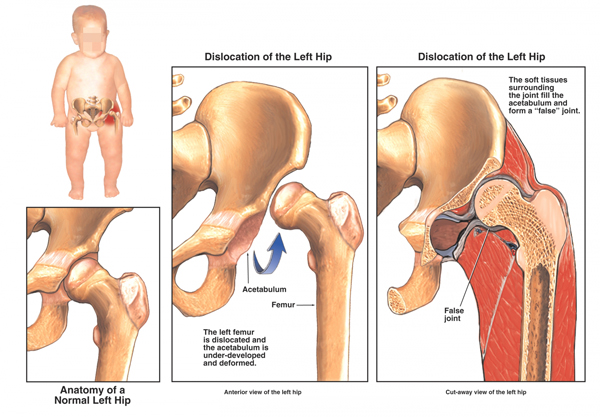Hip Dysplasia
Human babies and Labrador retriever puppies have something in common: a tendency to suffer from under-developed hip joints, called “developmental dysplasia of the hips (DDH).” DDH happens when the socket in the pelvic bone (the “acetabulum”) grows too shallow, so the head of the leg bone (“femur”) does not stay in place.
Although some cases of DDH are evident at birth, others do not develop until months or years later. You will notice your pediatrician spending time at each well exam checking your baby’s hips to see if they feel like they are developing normally. Babies who have dysplastic hips may sit, crawl, or walk asymmetrically, may appear to have one leg significantly shorter or walk late. If you wonder about how your baby is sitting, crawling or walking, please bring that to our attention as soon as possible so we can be sure your baby’s hips are normal.
An ultrasound of the hips may help your pediatrician diagnose hip dysplasia in children less than 6 months of age. Older children may require hip X-rays.
If a child is diagnosed with DDH, an orthopedic specialist with experience treating children’s hip problems will be consulted to help determine the best treatment. For infants, we may recommend a soft harness, called a Pavlik Harness, which holds the femur in a position and stimulates the pelvis to grow a deeper socket. Older infants and children may need surgery to correct hip dysplasia.
Medical Illustration Copyright © 2009 Nucleus Medical Media, All rights reserved. www.nucleusinc.com

